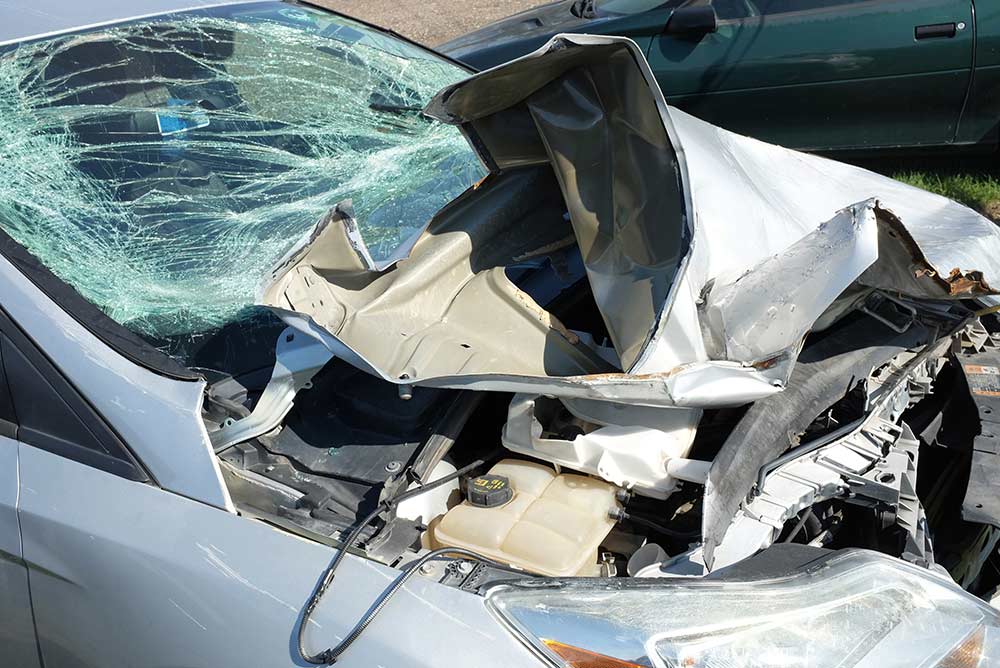Head-on collisions are among the top three most dangerous types of car accidents. In 2020, there were over 3,000 fatal head-on collisions and many more that resulted in serious injuries.
Rarely are head-on collisions considered minor accidents. And in many cases, these types of accidents result in severe, catastrophic injuries that leave a person temporarily impaired or even permanently disabled.
If you or a loved one are injured in an Indiana head-on collision, contact our team at Crossen Law Firm for legal help with your claim.
What is a Head-On Collision?
A head-on crash generally occurs when two vehicles driving in opposite directions collide with one another. Because of where the force is placed in these collisions, the front of the vehicles usually crumple, and the driver and passengers inside can be severely injured.
While head-on collisions can happen genuinely by accident, they are almost always the result of negligent and reckless driving. For example, head-on collisions can occur when:

- A driver is going the wrong way down a one-way road
- A driver fails to yield the right of way at a stop sign
- A driver speeds through an intersection when they have a red light
- A driver swerves into another lane of oncoming traffic
Head-on collisions also commonly occur when the driver is drunk, talking on a cell phone, or driving while fatigued. In any of these situations, it’s easy for the driver to lose control of their vehicle and end up swerving into the path of another oncoming vehicle.
Catastrophic Head-On Collision Injuries
It is possible for head-on collision injuries to be minor, especially if the vehicles that collided were not driving very fast. However, in most cases, the damage in head-on collisions is severe, as are the injuries. This is what makes head-on collisions so dangerous.
Some of the most common head-on collision injuries include:
- Head and neck injuries
- Traumatic brain injuries
- Back and spinal cord injuries
- Blunt-force trauma
- Chest injuries
- Internal bleeding and internal organ damage
- Facial damage
- Severe lacerations and broken bones
Many of the injuries above can require expensive medical treatments and potentially the need for long-term care and therapy. And in some cases, the injury can be life-threatening or leave the victim disabled or impaired for the rest of their life.
How to Avoid a Head-On Collision
According to the National Safety Council, the key to avoiding any accident, including head-on collisions, is to drive defensively. Specifically, this means following The Four R’s:

- Read the road: Always scan and read the road ahead to watch for hazards or other negligent drivers. This is especially important when driving around curves, turns, or going uphill.
- Drive to the Right: Always drive slightly to the right of your lane to leave space between you and oncoming traffic. If more than one lane is available, drive in the one farthest to the right unless you need to pass or make a left-hand turn.
- Reduce your speed: If you see a hazard or a negligent driver, reduce your speed. Do not slam on your brakes or swerve into another lane, as this could cause someone else to hit you.
- Ride off the road: If a collision is imminent, it’s best to ride off the road onto the shoulder if possible. Driving off the road is less likely to cause serious injuries compared to what would happen if you collide head-on with another vehicle.
Recovering Compensation for Catastrophic Head-On Collision Injuries
If you are severely injured in a head-on collision, a personal injury claim can help you recover compensation that can cover your losses. This includes medical expenses, lost income, and property damage. You may also be able to recover compensation for non-economic damages, such as pain & suffering and emotional distress.
However, to win your case and recover compensation, you must be able to prove that the other driver was primarily at fault for what happened. Indiana is a modified comparative fault state, which means you must prove that you were less than 51% at fault if you intend to file a claim against the other driver.
Even if fault seems obvious to you, as the plaintiff (the victim), you still carry the burden of having to provide sufficient evidence to prove that another negligent party was responsible for what happened to you. This is why working with an attorney is so important in these situations.
An experienced head-on collision attorney can help investigate the accident, obtain necessary evidence, and handle communication and negotiations with the other parties involved.
Evidence that you or your attorney can work to obtain that can help prove your case can include:
- Photos from the scene of the accident
- Video surveillance footage
- Accident reconstruction reports
- Police reports
- Eyewitness statements
- Black box data
- Cell phone data
Our Indiana Personal Injury Attorneys Are Here to Help
At Crossen Law Firm, our Indiana car accident lawyers have over 20 years of experience helping victims prove fault and win their cases. We understand how devastating injuries can be after a head-on collision. Our dedicated team is prepared to advocate for your rights and do as much as possible to ensure you win the settlement you deserve.
If you or a loved one has been involved in a head-on collision, contact us on our website or call us today at (317) 401-8626 for a free consultation!

 317-401-8626
317-401-8626 
.jpg)